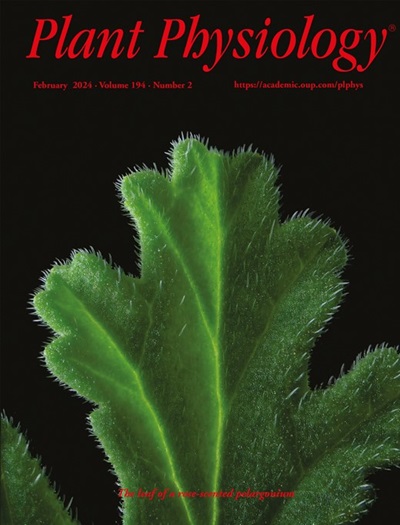OsHDAC1 deacetylates the aldehyde dehydrogenase OsALDH2B1, repressing OsGR3 and decreasing salt tolerance in rice
IF 6.5
1区 生物学
Q1 PLANT SCIENCES
引用次数: 0
Abstract
Salt stress poses a significant challenge to the growth and productivity of rice (Oryza sativa L.). Histone deacetylases (HDACs) play a vital role in modulating responses to various abiotic stresses. However, how OsHDAC1 responds to salt stress remains largely unknown. Here, we report that OsHDAC1 decreases salt tolerance in rice through post-translational modification of metabolic enzymes. Specifically, the rice OsHDAC1 RNAi lines exhibited enhanced resilience to salt stress, while plants overexpressing OsHDAC1 were notably more sensitive. OsHDAC1 interacts with the aldehyde dehydrogenase (ALDH) OsALDH2B1 and deacetylates it at K311 and K531, triggering ubiquitin-proteasome-mediated degradation of OsALDH2B1. OsALDH2B1 can directly target OsGR3, which encodes a type of glutathione reductase critical for reactive oxygen species (ROS) scavenging. Compared with wild-type plants, OsALDH2B1-overexpressing plants exhibited higher OsGR3 expression levels and increased salt resistance, whereas OsALDH2B1 RNAi lines showed reduced OsGR3 expression and lower salt resistance. Collectively, our data suggest that salt stress down-regulates OsHDAC1, resulting in an increase in the acetylation level of OsALDH2B1, which in turn stabilizes OsALDH2B1 and promotes its activity in the regulation of OsGR3 transcription. This OsHDAC1/OsALDH2B1/OsGR3 regulatory module represents an alternative pathway for governing salt stress adaptation in rice.OsHDAC1 可使醛脱氢酶 OsALDH2B1 去乙酰化,从而抑制 OsGR3 并降低水稻的耐盐性
盐胁迫对水稻(Oryza sativa L.)的生长和生产力构成了重大挑战。组蛋白去乙酰化酶(hdac)在调节对各种非生物胁迫的反应中起着至关重要的作用。然而,OsHDAC1对盐胁迫的反应在很大程度上仍然未知。在这里,我们报道OsHDAC1通过代谢酶的翻译后修饰降低了水稻的耐盐性。具体而言,水稻OsHDAC1 RNAi系对盐胁迫的抗逆性增强,而过表达OsHDAC1的植株明显更敏感。OsHDAC1与醛脱氢酶(ALDH) OsALDH2B1相互作用,在K311和K531处使其去乙酰化,触发泛素蛋白酶体介导的OsALDH2B1降解。OsALDH2B1可以直接靶向OsGR3, OsGR3编码一种对活性氧(ROS)清除至关重要的谷胱甘肽还原酶。与野生型植物相比,过表达OsALDH2B1的植物表现出更高的OsGR3表达水平和更高的耐盐性,而过表达OsALDH2B1的RNAi系表现出更低的OsGR3表达水平和更低的耐盐性。综上所述,我们的数据表明盐胁迫下调OsHDAC1,导致OsALDH2B1乙酰化水平升高,从而稳定OsALDH2B1并促进其调节OsGR3转录的活性。OsHDAC1/OsALDH2B1/OsGR3调控模块代表了调控水稻盐胁迫适应的另一种途径。
本文章由计算机程序翻译,如有差异,请以英文原文为准。
求助全文
约1分钟内获得全文
求助全文
来源期刊

Plant Physiology
生物-植物科学
CiteScore
12.20
自引率
5.40%
发文量
535
审稿时长
2.3 months
期刊介绍:
Plant Physiology® is a distinguished and highly respected journal with a rich history dating back to its establishment in 1926. It stands as a leading international publication in the field of plant biology, covering a comprehensive range of topics from the molecular and structural aspects of plant life to systems biology and ecophysiology. Recognized as the most highly cited journal in plant sciences, Plant Physiology® is a testament to its commitment to excellence and the dissemination of groundbreaking research.
As the official publication of the American Society of Plant Biologists, Plant Physiology® upholds rigorous peer-review standards, ensuring that the scientific community receives the highest quality research. The journal releases 12 issues annually, providing a steady stream of new findings and insights to its readership.
 求助内容:
求助内容: 应助结果提醒方式:
应助结果提醒方式:


